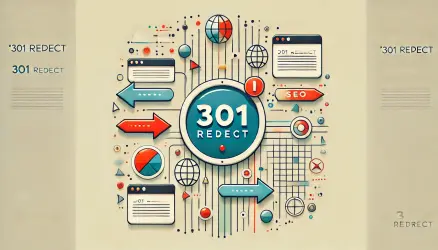As artificial intelligence (AI) tools and generative engines like ChatGPT, Google SGE, and Bing Copilot become more advanced. They increasingly rely on crawling and processing web content to provide users with direct answers, summaries, and synthesized information.
Just as robots.txt lets you control what search engines can access on your website, a new standard called llms.txt (Large Language Model Systems text file) is emerging to help site owners manage how AI models interact with their content.
As part of Generative Engine Optimization (GEO), using llms.txt helps website owners manage how their content is discovered, referenced, or used by AI-powered search and generative engines.
Just as classic SEO focuses on search engine crawlers, GEO considers how AI models access and present web content, making llms.txt an important tool for modern web strategy.
What Is llms.txt?
llms.txt is a simple text file you place in the root directory of your website, just like robots.txt.
Its purpose is to provide specific instructions or preferences to AI crawlers and large language model (LLM) systems, such as which parts of your website they can use for training data, generate answers, or cite in responses.
Although still an emerging standard, llms.txt is being increasingly adopted as the influence of AI-generated search grows.
The file is named llms.txt (sometimes written as ai.txt or ai-policy.txt), and its structure is designed to be simple and human-readable, making it easy to add, update, or remove instructions as needed.
While
robots.txtis intended for traditional search engines,llms.txtis aimed specifically at AI bots and large language model systems.
Why Was llms.txt Created?
With the rise of AI-powered search and answer engines, many website owners became concerned about their content being used for AI training or presented in generative answers without permission, proper credit, or context.
The llms.txt initiative was created to address these concerns, giving webmasters a voice in how their content is accessed and used by AI.
This standard allows site owners to:
- Allow or disallow AI crawlers from accessing certain parts of their website.
- Request attribution or citation when content is used in generative answers.
- Specify preferences for training data usage or AI summarization.
- Protect sensitive or proprietary content from being scraped by LLM bots.
How Does llms.txt Work?
Like robots.txt, you create a plain text file named llms.txt and upload it to the root of your domain (e.g., https://yourdomain.com/llms.txt).
AI bots and LLM crawlers are expected to check this file and follow the rules you set. The format is simple and may include user-agent targeting, allow/disallow rules, and instructions for citation or training use.
Example of a basic llms.txt file
# Disallow all LLMs from using content on the /private/ folder
User-agent: *
Disallow: /private/
# Allow OpenAI to crawl everything except /members/
User-agent: OpenAI
Disallow: /members/
# Request attribution for all content
Request-Attribution: yes
In this example, all AI crawlers are blocked from accessing content in the /private/ folder, while OpenAI’s crawler is also blocked from /members/.
The Request-Attribution: yes line politely asks all bots to credit your site when they use your content in AI-generated responses.
Advanced llms.txt example
# Block all AI bots from the /premium/ and /drafts/ directories
User-agent: *
Disallow: /premium/
Disallow: /drafts/
# Allow GoogleAI to crawl everything except /internal/
User-agent: GoogleAI
Disallow: /internal/
# Prohibit all bots from using any content for AI training
Allow-Training: no
# Require citation and specify a contact for licensing requests
Request-Attribution: yes
Contact: ai-permissions@yourdomain.com
# Add a note for all bots about your site's AI policy
Note: Content is protected. Contact for commercial use.
In this advanced example, all bots are prevented from crawling premium and draft content, GoogleAI has its own restriction, and a global rule prohibits using your content for AI model training. It also includes an explicit contact address and a note clarifying your site’s AI policy.
What Can You Control with llms.txt?
While support for llms.txt is still developing, here are common use cases:
- Block AI bots from certain sections (like premium, member-only, or sensitive areas)
- Request citation or attribution whenever content is used in AI-generated answers
- Allow or disallow use of your content for training AI models
- Provide contact or licensing info for requests related to AI use
Metadata and AI: Using Meta Tags to Control AI Access
In addition to llms.txt, there are emerging meta tags designed specifically for AI crawlers and large language models. These meta tags let you provide page-level instructions, similar to how you can use <meta name="robots"> for classic search engines.
Some proposed meta tags for AI control include:
<meta name="robots" content="noai">– Prevents AI bots from using the page for training or generation.<meta name="robots" content="noimageai">– Restricts AI from using images on the page.
For example, to block AI systems from using a page entirely, add this to your HTML’s <head> section:
<meta name="robots" content="noai">It’s important to note that, like llms.txt, support for these AI-focused meta tags is still developing and may not be honored by all bots yet.
However, using them is a recommended part of Generative Engine Optimization (GEO), helping you signal your preferences to AI platforms both at the site level and on individual pages.
Is llms.txt Mandatory?
No. Using llms.txt is voluntary, and not all AI bots or large language model providers will honor its rules yet. However, adoption is growing as the need for web transparency and control increases.
It’s likely that leading AI companies will support it more consistently in the near future, especially as publishers and regulators push for more responsible content usage.
To ensure your llms.txt file is effective and respected by AI crawlers, follow these best practices. The right structure, location, and clear instructions will help you control how AI systems use your site’s content.
- Keep your
llms.txtin the root directory, just likerobots.txt. - Regularly update the file as your policies or AI standards change.
- Use clear, simple language and follow recognized syntax to maximize compatibility.
- Combine
llms.txtwithrobots.txtfor full control over both traditional crawlers and AI bots. - Monitor which bots are visiting your site and update rules as new AI crawlers appear.
# Example: Blocking all LLM bots from a private folder and requesting attribution
User-agent: *
Disallow: /private/
# Allow a specific AI agent to crawl everything except /premium-content/
User-agent: OpenAI
Disallow: /premium-content/
# Ask all bots to provide attribution when using your content
Request-Attribution: yes
# Provide a contact email for permissions or questions
Contact: webmaster@yourdomain.com
Adjust these rules as your content and policies evolve, and review your llms.txt file regularly to keep up with new AI agents or standards.
FAQ’s
llms.txt is a simple text file placed in the root directory of your website. It is designed to instruct AI systems and generative models on how to access your content, whether it can be used for training purposes, and your preferences regarding citations and references.
Using the llms.txt file gives website owners control over how AI engines use their content — including blocking access to specific parts of the site, requesting attribution, and limiting the use of content for training models. It’s an important step in protecting copyrights and brand visibility in a world where AI summarizes and shares content directly from the web.
robots.txt is meant for traditional search engines like Google and Bing, and its purpose is to define which pages should be crawled for SEO. In contrast, llms.txt is intended for generative AI models and specifies how (or if) your content can be used for training, citation, or AI-generated responses.
No. Using the llms.txt file is voluntary, but it’s highly recommended. While not all bots respect it yet, adoption is growing as awareness increases around protecting original content online and the need for clear AI-related policies.
Open a text editor like Notepad or VS Code, add your desired instructions in a simple format (e.g., User-agent, Disallow, Request-Attribution), and save the file as llms.txt. Then upload it to the root directory of your website, just like you would with robots.txt.
Conclusion
The emergence of llms.txt reflects the changing landscape of web publishing in the AI era, where Generative Engine Optimization (GEO) is becoming increasingly important.
By taking a proactive approach and implementing your own llms.txt policy, you align with GEO best practices and gain greater control over how your content is accessed, used, and credited by the next generation of AI engines and large language models.


